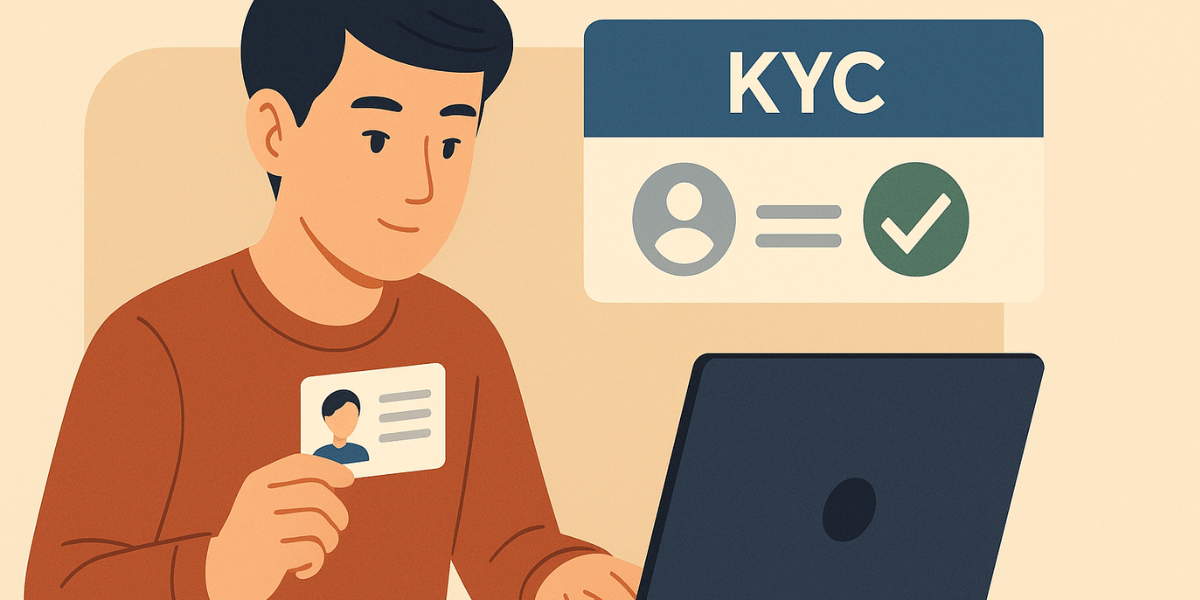Trailing stops are among the most misunderstood tools in forex risk management. Many traders think of them as a convenience feature that simply “locks profits,” but the most effective use of trailing stops is far more deliberate. Properly designed, a trailing stop is an adaptive control system that translates market information into a moving boundary between acceptable noise and unacceptable trend failure. It automates discipline, scales to volatility, reduces decision fatigue, and aligns exits with the original trade thesis instead of emotion. This article develops trailing stops from first principles and integrates them into a complete trading workflow: from choosing trail archetypes and calibrating distances to handling execution microstructure, portfolio-level constraints, and post-trade analytics. The goal is to help you build a rule set that is robust across sessions, currency pairs, and volatility regimes—and that protects capital without suffocating winners.
What a Trailing Stop Is—and What It Is Not
A trailing stop is a method that moves only in the trade’s favorable direction by a defined rule. For long positions, the stop ratchets upward; for shorts, it ratchets downward. When price advances, the trailing stop updates; when price retraces, the stop remains fixed. If the price reaches the stop, the position is exited. This asymmetry is intentional: it enforces the principle “cut losses, let winners run,” but does so dynamically rather than with a static target. A trailing stop is not a guarantee of profit, a substitute for trade planning, or an invitation to ignore structure. It must be designed around the market’s noise profile, the strategy’s edge, and the broker’s execution rules.
Core Mechanics: Distances, Triggers, and Ratchets
The essential parameters are distance, trigger logic, and ratchet frequency. Distance is the buffer from the most favorable price to the stop. Trigger logic defines when to update: tick-by-tick, bar close, or time-sliced intervals. Ratchet frequency governs how often a new stop is set. Tighter distances increase turnover and protect equity more aggressively, but risk premature exits. Wider distances reduce stop-outs and let trends breathe, but surrender more unrealized profit on reversals. A professional implementation balances these forces by anchoring distances to volatility and structure, not arbitrary pips.
Major Archetypes of Trailing Stops
Below are the most common, production-grade archetypes used in discretionary and algorithmic trading. Each has a logic that fits certain market states and strategy styles.
Fixed-Pip Trailing
The stop trails at a constant pip distance behind the best price. It is easy to implement and audit, but it ignores volatility. Effective only if the chosen distance is deliberately linked to the pair’s typical noise and session spread.
Percentage Trailing
The stop trails at a fixed percentage from the best price. This scales distance with price level but not with realized volatility. In forex, where most pairs are quoted near stable ranges, percentage trailing is less informative than volatility-based methods.
ATR-Based Trailing
The trail equals a multiple of Average True Range. Because ATR captures the current noise magnitude, an ATR trail expands in volatile regimes and contracts in quiet regimes. Multipliers of 1.5–2.5× ATR for intraday and 3–4× ATR for swing are common baselines. This is the institutional workhorse because it converts a moving noise estimate into a consistent control.
Structure-Based Trailing (Swing/Fractal)
The stop is moved below the latest swing low for longs or above the latest swing high for shorts, often with a small volatility buffer. It respects the price structure and filters out shallow noise, but it requires clear swing definitions and can lag in fast trends.
Indicator-Derived Trailing (e.g., Chandelier, Parabolic SAR)
Chandelier exits trail a multiple of ATR from the highest high (for longs). Parabolic SAR steps increase as trends mature, tightening aggressively into reversals. These codify specific philosophies: participate in the bulk of a move, then step out decisively.
Time-Sliced or Event-Driven Trailing
The stop is re-evaluated at bar closes (e.g., every H1) or after events (session open, rollover). This avoids tick noise and is well-suited for algorithmic portfolios that cannot micromanage every tick.
Designing a Volatility-Aware Trailing Stop
Design starts from a simple question: how much adverse movement is normal for this pair and timeframe when the trade remains valid? The answer is a function of volatility and structure. Volatility is measured by ATR, standard deviation, or realized range percentiles; structure is measured by the geometry of swings, pullbacks, and consolidation shelves. The design process:
- Define the strategy’s invalidation logic (trend break, mean reversion completion, momentum stall).
- Quantify typical adverse excursion during valid trends using historical MFE/MAE analysis.
- Set an initial trail as a multiple of volatility so that normal noise remains within the buffer, while genuine invalidation breaches it.
- Choose a ratchet trigger (tick, bar close, or time-slice) that matches execution resources and noise tolerance.
- Stress test across sessions and pairs; adjust by spread conditions and microstructure features (e.g., JPY pairs vs. EUR crosses).
Execution Microstructure and Broker Nuances
Trailing stop behavior depends on how the platform triggers and fills orders. Buy stops trigger on the ask; sell stops trigger on the bid. If your chart shows mid-price, stops can appear to trigger “early” or “late.” Spreads widen at rollover and news; a trail that sits within two to three times the spread risks spurious hits. Partial fills are rare at small sizes on liquid pairs but matter for larger clips or exotic crosses. Some platforms update trailing stops locally on the client; others manage server-side. Server-side is generally more reliable when you are offline. Always read platform specifics: Does the trail update on every tick or only at bar close? Are there minimum step sizes? How are gaps handled across sessions?
Choosing Triggers: Tick, Close, or Interval
Tick updates maximize responsiveness but are vulnerable to micro noise and require stable connectivity. Bar-close updates reduce noise and align with candle structure, ideal for swing systems. Interval updates (e.g., every 5 minutes) are a pragmatic compromise for portfolios. A rigorous approach selects the trigger mode during testing and keeps it constant to avoid behavioral drift.
Scaling with Position Size and Leverage
Trailing distance interacts with position size. Tight trails reduce drawdown amplitude but increase turnover and transaction costs. Wider trails carry more heat but produce longer hold times and fewer stops. A portfolio can mix trail regimes by sleeve: a core trend sleeve with wide ATR trails and a tactical sleeve with tighter, structure-based trails for partial scaling. Leverage should be allocated with worst-case slip assumptions so that a gap through the trail does not exceed the per-trade risk budget.
From Theory to Day-to-Day Operations
Define what you will do before you have to do it. A daily operations plan includes a pre-session check (volatility state, event calendar, spread averages), mid-session audit (open trade heat vs. allowed), and post-session review (realized vs. intended risk, trail behavior vs. plan). If the environment changes—e.g., spreads double during a risk-off episode—either pause new entries or widen trail multipliers temporarily per your change-control rules.
Worked Examples Across Pairs and Regimes
Example 1: EUR/USD Intraday Trend with ATR Trail
Assume ATR(14) on M15 is 10 pips. You set a 2×ATR trail (20 pips). Long at 1.1000 during London session. Price advances to 1.1035; trail ratchets to 1.1015. A pullback to 1.1020 holds; trend resumes to 1.1060; trail rises to 1.1040. A quick reversal prints 1.1040; stop exits with +40 pips. The trail permitted normal 10–15 pip pullbacks but forced an exit at a deep retrace that typically precedes a trend change.
Example 2: GBP/JPY Swing Trade with Structure Trail
GBP/JPY volatility is high; ATR(D1) ≈ 180 pips. Long on a breakout; initial protective stop is under the breakout base. As the trend prints a higher low, move the stop under that swing low minus a 0.25×ATR buffer (≈ 45 pips). This avoids the common mistake of parking stops at obvious swing lows with no noise margin. The trail steps are less frequent but more meaningful, matching the pair’s swing geometry.
Example 3: USD/CHF Range Break with Time-Sliced Trail
To avoid tick noise around the New York open, you update the trail every 15 minutes based on the period high minus 1.8×ATR(14, M15). The system captures directional pushes while ignoring micro whip, ideal for portfolios managing many symbols.
Integrating Trailing Stops with Entry Logic
Entry and trail must agree on what constitutes a valid trend or mean reversion. An entry based on a momentum surge and a trail based on fragile micro pullbacks will clash. A clean approach is to couple momentum entries with ATR trails and structure entries with structure trails. If you are pyramiding, scale-in points should not force the trail so tight that natural consolidation ejects the entire position. Place add-ons where a fresh impulse is likely, and let the trail below a combined structure govern the whole.
Combining Partial Profits with Trailing Stops
One of the most robust practices is to scale out a fraction of the position at a logical objective while letting the remainder trail. For instance, close 30–50% at a measured move or prior high and switch the rest to a wider ATR trail. This balances the psychological need to bank gains with the mathematical need to participate in fat-tail trends. The partial exit should not be arbitrary; it should be defined in the plan and backtested for expectancy impact.
Portfolio-Level Trailing: Equity Curves and Circuit Breakers
Trailing logic can extend to the portfolio. An equity curve trailing stop reduces risk across all positions if the account’s peak-to-trough drawdown exceeds a threshold. For example, if equity declines 5% from its peak, reduce all open risk by one third; at 8%, cut another third; at 10%, flatten. This converts a bad regime from a series of large hits into a controlled step-down. It also enforces humility: when your system is out of sync, you shrink until it reconnects with the market.
Behavioral Discipline: Contracts You Keep with Yourself
Trailing stops are easy to design and hard to obey. Traders are tempted to widen the trail during adverse moves or to tighten it impulsively when unrealized profits swell. The cure is governance: convert trail rules into platform-enforced scripts, restrict discretionary overrides to rare, audited exceptions, and log any deviation with a reason and timestamp. The journal becomes a mirror for your discipline. Over time, the system becomes the trader.
Backtesting, Walk-Forward, and Live Validation
Backtests must model spread, slippage, and trail update rules faithfully. If the trail updates at bar close in live trading, do not let your backtest update intrabar. Evaluate performance not just by total return but by average trade expectancy, profit factor stability, max adverse excursion, and stop-out distribution. Then perform a walk-forward test where parameters are tuned on one window and validated on the next. Finally, trade small in production, comparing realized to theoretical behavior across sessions and events.
Stress Behavior: Gaps, News, and Rollover
Forex rarely gaps like equities, but session transitions and high-impact news can create discontinuities. Your trail should either be suspended around scheduled events or widened systematically. During rollover, spreads can widen sharply; a trail too close to price will be cut by spread alone. If you cannot monitor actively, use server-side trails and conservative distances, or forbid new entries in the blackout window per your rules.
Common Mistakes—and Their Fixes
- Trail set inside the spread: Fix by ensuring the minimum trail step is at least 2–3× average spread for the session.
- Tick-based overreactivity: Switch to bar-close or interval updates to suppress microstructure artifacts.
- Ignoring pair personality: JPY crosses need wider buffers; EUR crosses tolerate tighter ones. Calibrate per pair and session.
- Uniform parameters across regimes: Implement regime tags (quiet, normal, volatile) and parameter presets per tag.
- Discretionary overrides without logs: Automate trail enforcement; require written rationale to change live parameters.
Choosing Parameters with Data, Not Hope
Parameter selection should reflect the distribution of adverse excursions in your winning trades. If the median MAE for winners is 0.8×ATR and the 75th percentile is 1.4×ATR, a trail at 1.2–1.6×ATR will retain most winners while eliminating laggards. The math converts historical behavior into present discipline; hope is not required.
Comparison Table: Trailing Stop Methods, Strengths, and Best Uses
| Method | Primary Logic | Strengths | Weaknesses | Best Market State | Notes |
|---|---|---|---|---|---|
| Fixed-Pip Trail | Constant distance in pips | Simple, predictable | Ignores volatility; brittle | Stable, quiet ranges | Anchor to average noise or spread × factor |
| Percentage Trail | Fixed % from best price | Scale with price level | Weak volatility signal | Pairs with slow drift | Less useful than ATR in FX |
| ATR Trail | Multiple of ATR | Adapts to noise | Can lag on sudden regime shifts | Trend/momentum phases | Institutional default baseline |
| Structure Trail | Below swing low / above swing high | Respects price geometry | Subjective swing definition | Directional trends with pullbacks | Add ATR buffer to avoid obvious stops |
| Chandelier Exit | Highest high − k×ATR | Captures long trends | Late exits in chop | Strong, clean trends | Set k by MAE distribution |
| Parabolic SAR | Step increases over time | Tightens into reversal | Whipsaw in noise | Persistent one-directional moves | Combine with volatility filters |
| Time-Sliced | Update every N minutes/bars | Noise control, scalable | May react slowly | Portfolio environments | Use with ATR thresholds |
Quantifying Performance: What to Measure
Beyond win rate and P/L, measure:
- Expectancy per trade: Average gain accounting for losers and winners.
- MFE/MAE profiles: To calibrate trail position relative to trend quality.
- Stop-out distribution: Where in the trade lifecycle stops occur; early stop-outs may indicate trail too tight.
- Profit factor stability: Across regimes (quiet vs volatile weeks).
- Recovery factor and drawdown depth: Trails should reduce tail risk without crushing upside.
Building a Rulebook: From Idea to Enforcement
A credible trailing stop rulebook contains:
- Definitions: Exact trail method, multiplier, trigger mode, and step size.
- Environment tags: Quiet/normal/volatile with preset parameters.
- Exceptions policy: When and how trails may be suspended (e.g., scheduled news).
- Portfolio overlays: Equity curve trail, sleeve-level limits, and exposure circuit breakers.
- Change control: Parameter changes occur only on schedule (weekly/monthly), not intra-day impulses.
Case Study: Turning a Breakout System into a Survivor
A breakout algorithm on EUR/USD produced strong gains in trend weeks but suffered deep give-backs and long flat periods. Replacing a fixed take-profit with a 2.2×ATR trail and adding a partial profit at 1.2×ATR improved the recovery factor and reduced the worst drawdown by one third. The system’s win rate dropped slightly, but expectancy rose because fat-tail winners were no longer capped. The key was calibrating the trail so it survived normal post-breakout retests without tolerating pattern failures.
Case Study: Carry Sleeve with Equity Trailing
A portfolio held AUD/JPY and NZD/JPY as a carry sleeve. During a risk-off shock, both fell simultaneously. A portfolio equity trail cut sleeve risk by half at a 6% drawdown and flattened at 9%, keeping the overall account intact while carry premia recovered later. The lesson: per-trade trailing is necessary but not sufficient in clustered exposures; equity-level trailing absorbs systemic shocks.
Implementation Checklist
- Choose archetype(s) aligned with entry logic.
- Calibrate multipliers using MAE of winning trades.
- Select trigger mode (tick/close/interval) and keep it consistent.
- Encode environment presets for volatility regimes.
- Backtest with real spread/slippage and trail timing fidelity.
- Walk-forward validate; then run small live with audit logging.
- Install portfolio overlays: equity trail, exposure caps, and circuit breakers.
- Review weekly; change only through formal change control.
Conclusion
Trailing stops are not a gimmick. They are the logic that turns uncertain markets into a series of controlled decisions. When you anchor trails to volatility and structure, codify triggers, and integrate portfolio overlays, you transform exits from guesswork into governance. Good trails do not eliminate losing trades; they prevent small losses from becoming big ones and turn good trades into great ones by letting the market do the heavy lifting. The discipline lies not in finding a perfect number of pips, but in enforcing a design that consistently respects the boundary between noise and failure.
Frequently Asked Questions
What is the single best trailing stop for forex?
There is no universal best. ATR-based trails are a robust baseline because they adapt to noise. Many traders combine ATR with structure: use a 2–3×ATR baseline and ratchet beneath swing lows/highs with a volatility buffer.
How do I choose the ATR multiple?
Analyze the maximum adverse excursion of your winning trades. If the median MAE is 0.8×ATR and the 75th percentile is 1.4×ATR, a trail between 1.2× and 1.6×ATR preserves most winners while exiting weak ones. Validate across pairs and regimes.
Should I trail on ticks or on bar closes?
Tick trailing is more responsive but prone to noise and connectivity risks. Bar-close or time-sliced trailing reduces false updates and is easier to scale. Match the trigger to your timeframe and portfolio size.
Why do my trailing stops get hit around rollover?
Spreads widen at rollover. If your trail sits close to price, spread alone can trigger it. Either avoid new entries near rollover, widen the trail temporarily, or design rules that suspend updates during that window.
Can I combine partial profits with a trailing stop?
Yes. A common pattern is to take partial profits at a logical objective (for example, 1.0–1.5× initial risk) and let the remainder trail with a wider ATR or structure-based stop. This improves psychological comfort and can raise expectancy.
Are trailing stops suitable for scalping?
Often not. Scalping operates inside micro noise where spreads and execution latency dominate. Fixed targets and static stops can be more efficient. Trailing may work if designed with microstructure-specific rules, but edge is thin.
How do I avoid being stop-hunted?
Do not set trails exactly at obvious technical levels. Place them beyond structure with a volatility buffer and avoid clustering your stops with the crowd. Interval or bar-close updates also reduce micro spikes from triggering trails.
What if volatility regime changes mid-trade?
Use environment presets. If your volatility classifier flips from normal to volatile, rules can widen the trail at the next bar close or suspend updates temporarily. Make this mechanical and documented, not impulsive.
Do trailing stops reduce drawdowns?
Well-designed trails reduce the depth and duration of drawdowns by exiting weakening trades sooner and preserving capital for better opportunities. Pair them with an equity curve trailing stop for portfolio-level protection.
Can I use the same parameters on all pairs?
Prefer pair-specific presets. JPY crosses and GBP pairs generally need wider buffers than EUR pairs. Start from a common baseline and adjust per pair’s MAE distribution and spread characteristics.
What is an equity curve trailing stop?
It is a portfolio overlay that reduces or closes positions when the account drawdown breaches predefined thresholds from the equity peak. It is a circuit breaker for bad regimes, complementing per-trade trails.
How do I backtest trailing stops correctly?
Match the trail’s update timing to live behavior. If your trail updates at bar close, do not allow intrabar hindsight adjustments in backtests. Include realistic spread and slippage, and evaluate performance across multiple volatility regimes.
What is the biggest mistake traders make with trailing stops?
Designing them around comfort rather than data. Trails set to “protect profits quickly” often sit inside normal noise and eject the best trades. Calibrate with MAE of winners and enforce rules mechanically.
Note: Any opinions expressed in this article are not to be considered investment advice and are solely those of the authors. Singapore Forex Club is not responsible for any financial decisions based on this article's contents. Readers may use this data for information and educational purposes only.







